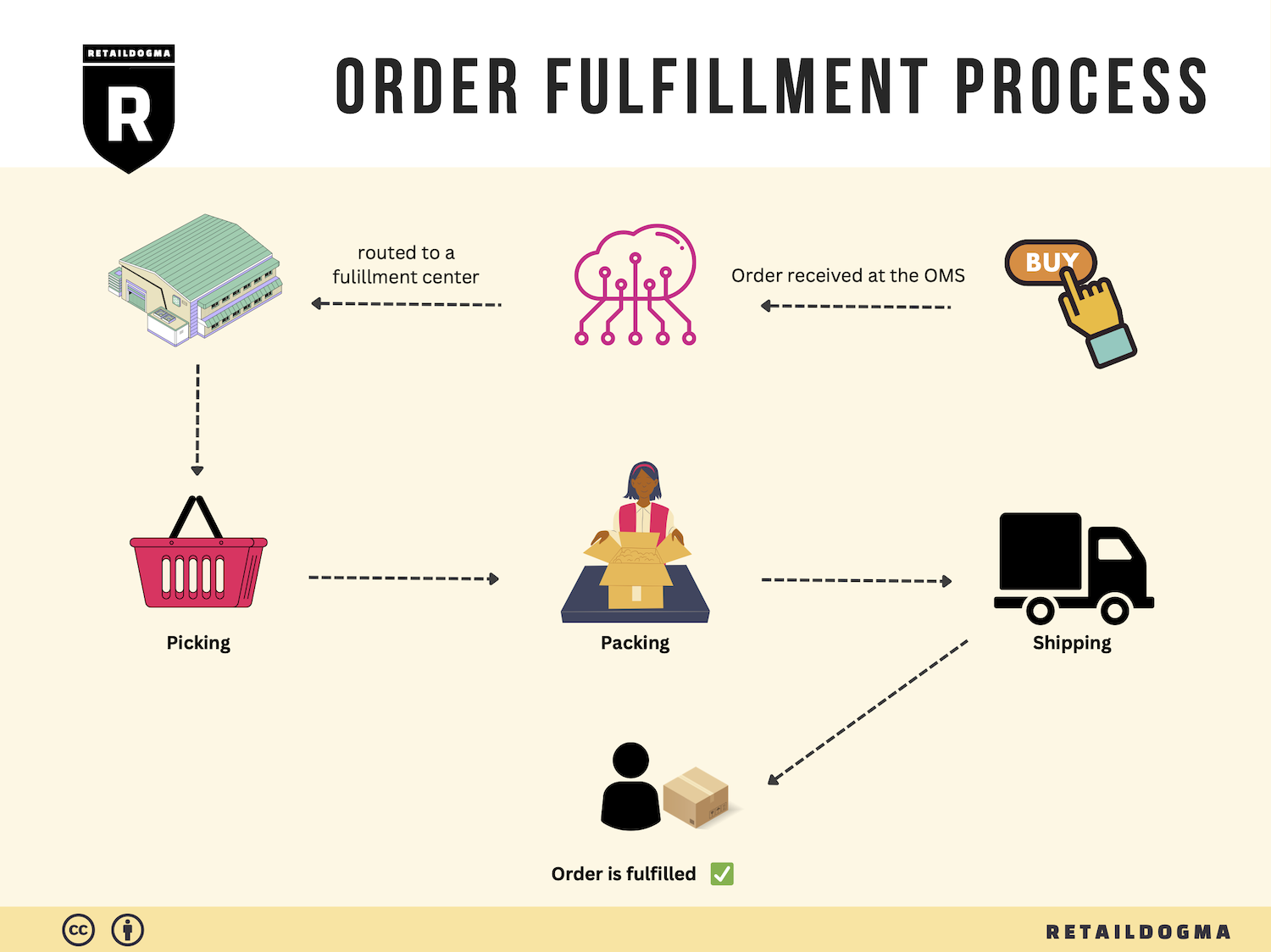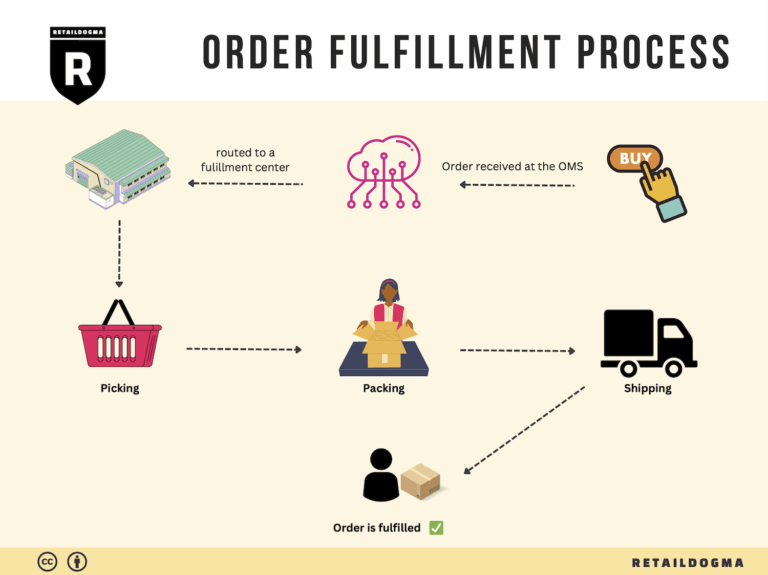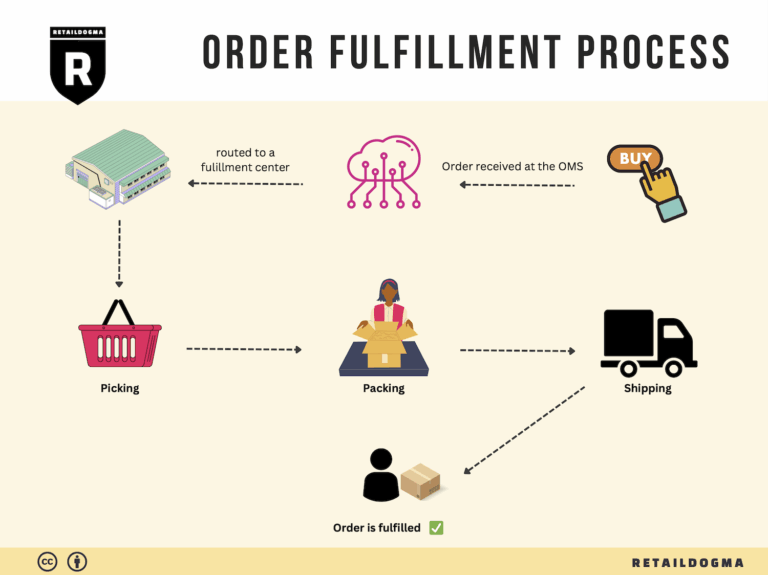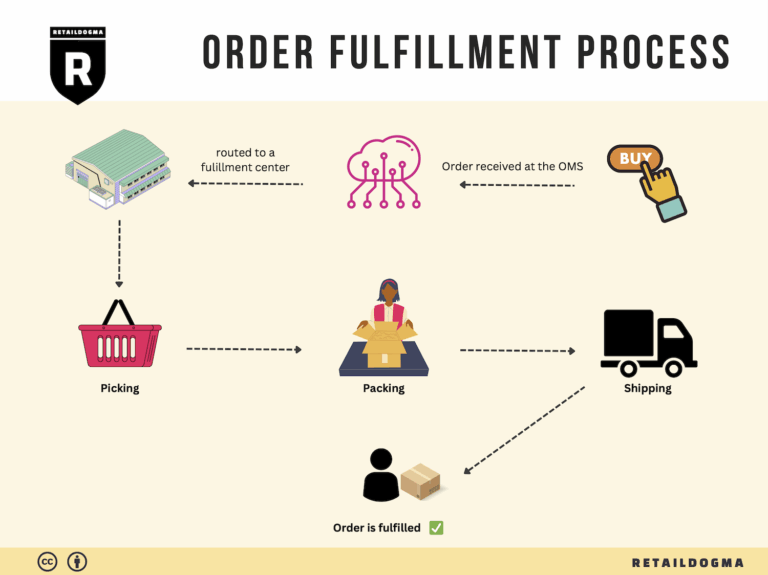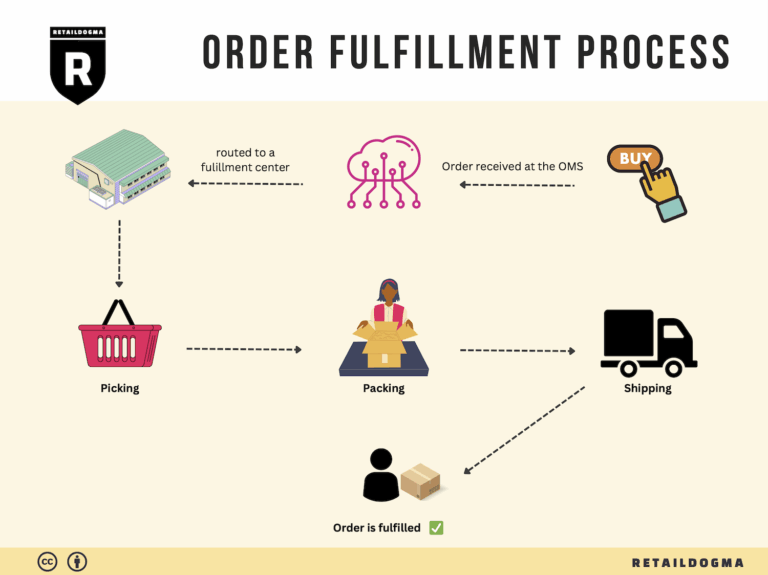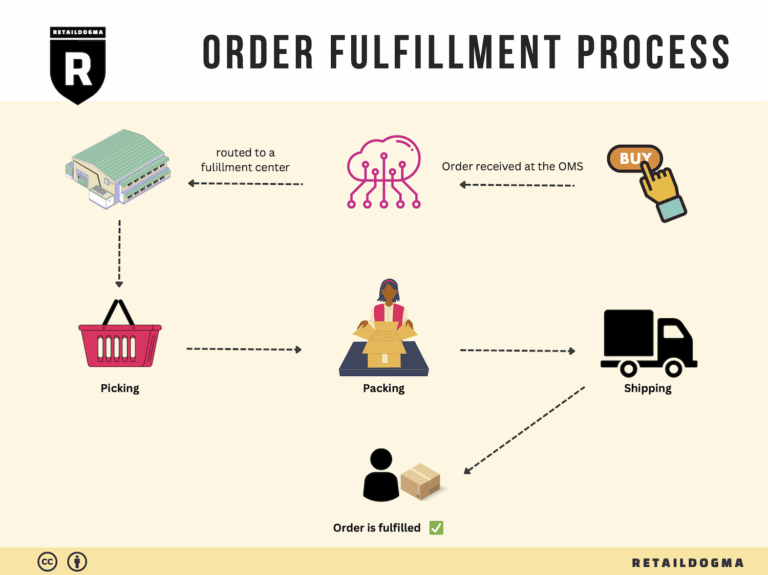Ecommerce Fulfillment Services: The Ultimate Guide (2025)
What is E-commerce Fulfillment? An Introduction for Growing Businesses
Understanding the Challenges of E-commerce Fulfillment
As your online business begins to flourish, it’s common to feel overwhelmed by the logistical demands of packing and shipping orders. Managing inventory, ensuring timely deliveries, and maintaining customer satisfaction can quickly become daunting tasks. This is where e-commerce fulfillment comes into play—a crucial process that involves getting your products from your warehouse to your customers efficiently and effectively.
E-commerce fulfillment refers to the complete process of receiving, processing, and delivering orders to customers. This encompasses everything from inventory management and order processing to shipping and handling returns. For growing businesses, understanding the nuances of fulfillment can be the difference between scaling successfully and struggling to keep up with demand.
What This Guide Covers
In this guide, we will explore various fulfillment models, including Fulfillment by Amazon (FBA) and third-party logistics (3PL), to help you determine which approach aligns best with your business goals. You’ll learn about the core services offered by fulfillment partners, such as storage, packing, shipping, and customer service, and how these services can streamline your operations.
Additionally, we will provide practical insights on how to choose the right fulfillment partner for your needs. Factors such as location, technology integration, service levels, and customer support are critical in making an informed decision. Pricing structures will also be covered, as understanding costs associated with different fulfillment methods will help you maintain healthy profit margins while meeting customer expectations.
Empowering Smart Logistics Decisions
Ultimately, the goal of this guide is to empower you—business owners and operations managers—to make informed decisions about your logistics strategy. By understanding the intricacies of e-commerce fulfillment, you can optimize your supply chain, enhance customer satisfaction, and focus on what you do best: growing your business. Whether you’re just starting or looking to scale, a solid fulfillment strategy is essential for long-term success in the competitive e-commerce landscape.
What You’ll Learn In This Guide
- What is E-commerce Fulfillment? An Introduction for Growing Businesses
- The Order Fulfillment Process: From ‘Buy’ Button to Customer’s Door
- Comparing Fulfillment Models: In-House vs. 3PL vs. Dropshipping
- A Deep Dive into Amazon FBA: Pros, Cons, and Who It’s For
- Core Services Offered by Fulfillment Centers
- How to Choose a Fulfillment Partner: A 6-Point Checklist
- Understanding Fulfillment Pricing: A Breakdown of Common Fees
- Frequently Asked Questions (FAQs) about Fulfillment
- Conclusion: Is Outsourcing Fulfillment the Right Move for Your Business?
- Important Disclaimer
The Order Fulfillment Process: From ‘Buy’ Button to Customer’s Door
1. Receiving Inventory
The order fulfillment process begins with receiving inventory at the fulfillment center. This involves the systematic intake of products from suppliers or manufacturers. When the goods arrive, they are checked against purchase orders to ensure accuracy in quantity and quality. This process is crucial as it helps to identify discrepancies early on, preventing issues that could disrupt fulfillment later.
Key terms associated with this step include SKU (Stock Keeping Unit), which is a unique identifier for each product. SKUs streamline the inventory management process by allowing businesses to track and manage their stock efficiently. Proper receiving procedures not only contribute to inventory accuracy but also set the stage for smooth operations in subsequent steps.
2. Warehouse Storage
Once the inventory is received and verified, it is stored in designated areas within the fulfillment center. This step involves organizing products in a way that maximizes space and minimizes retrieval time. Effective warehouse storage is vital for operational efficiency, as it allows for quick access to items when orders are placed.
The concept of bin locations is critical here. Each product is assigned a specific location within the warehouse, and these locations are strategically chosen based on factors like product demand and size. By utilizing bin locations, businesses can ensure that high-demand items are easily accessible, reducing the time spent searching for products and ultimately speeding up the order fulfillment process.
3. Order Picking
When a customer places an order, the next step is order picking, where items are selected from the storage area to fulfill that order. This process can be executed in various ways, such as single order picking (selecting items for one order at a time) or batch picking (picking items for multiple orders simultaneously). The method chosen often depends on the volume of orders and the layout of the warehouse.
A pick list is a key tool in this step, as it outlines the items that need to be collected for each order. This list helps warehouse staff efficiently navigate the storage area and ensures that no items are overlooked. Order picking is a critical step because it directly impacts order accuracy and customer satisfaction; errors at this stage can lead to delays and returns, which can harm a business’s reputation.
4. Order Packing
Once the items are picked, they move to the packing station, where they are carefully packed for shipment. This step involves selecting appropriate packaging materials to protect the products during transit, as well as including necessary documentation, such as invoices and return labels. Proper packing is essential to prevent damage and ensure that the order arrives in perfect condition.
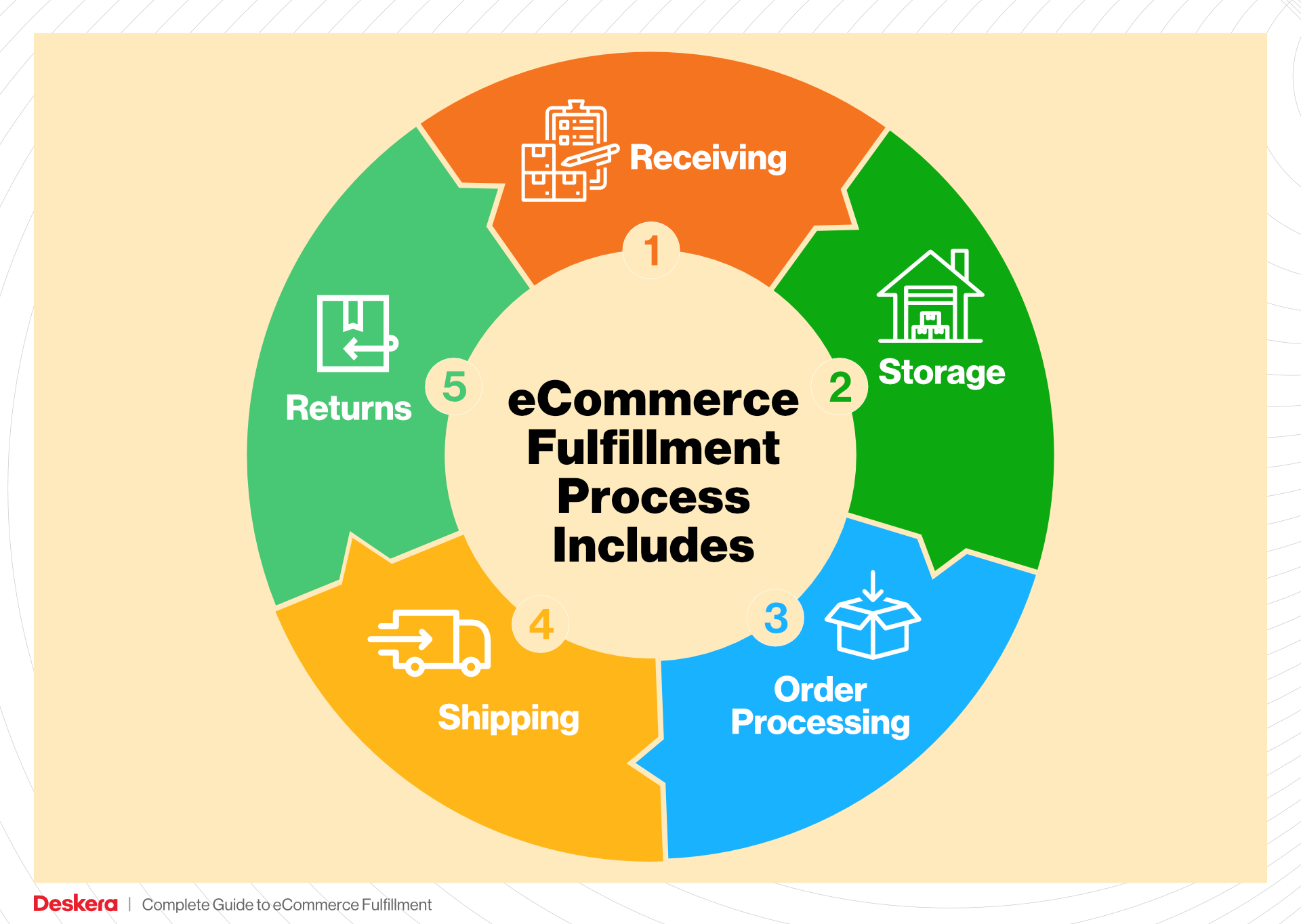
The use of packing slips is common in this phase. A packing slip lists the contents of the package and serves as a reference for both the shipper and the customer. Efficient packing not only safeguards products but also enhances the customer experience, as well-packaged items reflect a business’s attention to detail and commitment to quality.
5. Shipping & Delivery
The final step in the order fulfillment process is shipping and delivery. Once the order is packed, it is handed over to a carrier (e.g., UPS, FedEx, USPS) for transport to the customer. This stage is critical as it directly influences delivery speed and reliability, both of which are key factors in customer satisfaction.
Shipping labels play a vital role in this step. These labels contain essential information, including the recipient’s address and tracking details, allowing customers to monitor their shipment in real-time. Efficient shipping processes, including choosing the right carrier and optimizing delivery routes, can significantly reduce shipping costs and enhance service levels, making it a crucial aspect of scaling an e-commerce business.
By understanding and optimizing each of these five steps—receiving inventory, warehouse storage, order picking, order packing, and shipping & delivery—e-commerce businesses can streamline their operations, improve customer satisfaction, and ultimately scale their logistics effectively.
Comparing Fulfillment Models: In-House vs. 3PL vs. Dropshipping
Fulfillment Model Comparison
| Model | Who Handles Inventory | Best For (Business Stage) | Key Advantage | Key Disadvantage |
|---|---|---|---|---|
| In-House Fulfillment | The business itself | Established or growing businesses | Full control over inventory and processes | High overhead costs and resource requirements |
| Third-Party Logistics (3PL) | A third-party logistics provider | Startups to established businesses | Scalability and access to expertise | Less control over inventory and processes |
| Dropshipping | Supplier or manufacturer | New or small businesses | Low upfront investment and risk | Lower margins and reliance on suppliers |
In-House Fulfillment
In-house fulfillment refers to the process where a business manages its own warehousing, inventory management, and order fulfillment. This model is particularly beneficial for established businesses or those that are experiencing significant growth. The key advantage of in-house fulfillment is the level of control it offers over the entire logistics process. Businesses can implement their own systems, train their staff, and directly oversee quality control, which can lead to improved customer satisfaction. Additionally, having direct oversight allows for better tracking of inventory and fulfillment processes.
However, this model comes with significant challenges. The overhead costs can be quite high, including expenses related to warehousing, staffing, equipment, and technology. Furthermore, managing fulfillment in-house requires a substantial investment of time and resources, which can detract from other critical business activities such as marketing and product development. Companies that choose this route must be prepared for the complexities of logistics management and ensure they have the necessary infrastructure to support their operations.
Third-Party Logistics (3PL)
Third-party logistics (3PL) involves outsourcing logistics and fulfillment operations to an external provider. This model is highly versatile and can suit a wide range of business stages, from startups to established enterprises. The primary advantage of using a 3PL provider is scalability; businesses can easily adjust their logistics operations based on demand without the need for significant capital investment in infrastructure. Moreover, 3PL providers often bring a wealth of experience and technology that can enhance efficiency and reduce shipping times.
On the downside, businesses that utilize 3PL services may have less control over their inventory and fulfillment processes. This can lead to challenges in maintaining quality standards and managing customer expectations. Additionally, communication issues can arise if the 3PL provider does not align well with the company’s operational goals. Businesses must carefully select a 3PL partner that understands their needs and can deliver a high level of service to ensure a seamless customer experience.
Dropshipping
Dropshipping is a fulfillment model where a retailer sells products without holding any inventory. Instead, when a retailer sells a product, they purchase it from a third-party supplier who then ships it directly to the customer. This model is particularly appealing for new or small businesses, as it requires minimal upfront investment and lower risk. Entrepreneurs can start their e-commerce ventures without the burden of inventory management or warehouse operations, allowing them to focus on marketing and customer acquisition.
However, dropshipping also has its drawbacks. The most significant issue is the lower profit margins compared to traditional retail models, as suppliers take a portion of the sale. Additionally, businesses are highly dependent on their suppliers for inventory management and shipping, which can lead to inconsistencies in product availability and fulfillment times. This reliance can impact customer satisfaction and brand reputation if not managed properly. Therefore, entrepreneurs need to carefully vet their suppliers and establish strong communication channels to mitigate these risks.

In conclusion, each fulfillment model presents unique advantages and challenges. Choosing the right model depends on the specific needs and stage of your business. By understanding these differences, e-commerce business owners can make informed decisions that align with their operational capabilities and growth ambitions.
A Deep Dive into Amazon FBA: Pros, Cons, and Who It’s For
Understanding Fulfillment by Amazon (FBA)
Fulfillment by Amazon (FBA) is a service that allows e-commerce sellers to store their products in Amazon’s extensive network of fulfillment centers. Through this program, sellers can leverage Amazon’s robust logistics infrastructure to store, package, and ship their products directly to customers. FBA also provides sellers with access to Amazon’s customer service and returns management, making it an attractive option for many e-commerce entrepreneurs.
When a seller enrolls in FBA, they send their inventory to Amazon’s warehouses, where it is stored until an order is placed. Upon receiving an order, Amazon picks, packs, and ships the product on behalf of the seller, ensuring fast delivery times that are often crucial for customer satisfaction. Products fulfilled through FBA are eligible for Amazon Prime, which allows customers to receive their orders with expedited shipping, further enhancing the appeal of FBA for sellers aiming to boost their sales.
How FBA Works
-
Inventory Preparation: Sellers prepare their products according to Amazon’s guidelines. This includes labeling and packaging products in a way that meets FBA requirements.
-
Shipping to Amazon: Once prepared, sellers ship their inventory to designated Amazon fulfillment centers. Amazon provides shipping guidelines to optimize logistics and minimize costs.
-
Storage: After arrival, products are stored in Amazon’s warehouses. Sellers are charged storage fees based on the amount of space their products occupy.
-
Order Processing: When a customer places an order, Amazon takes over the fulfillment process. They handle picking the product from the shelves, packing it, and shipping it directly to the customer.
-
Customer Service and Returns: Amazon manages customer service inquiries and returns for FBA orders, allowing sellers to focus on other aspects of their business.
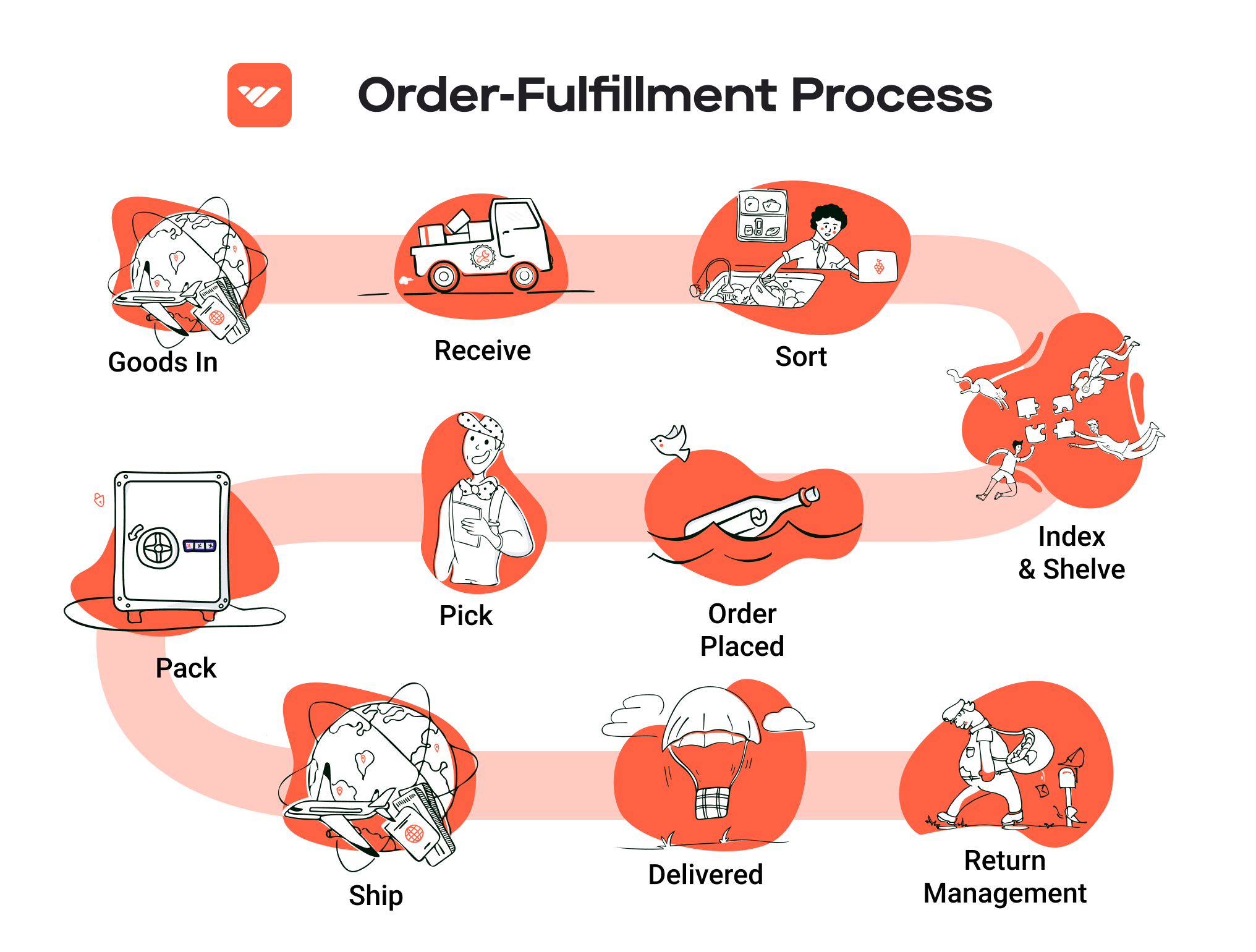
Pros of FBA
1. Prime Eligibility
One of the most significant advantages of using FBA is that products become eligible for Amazon Prime. This offers a substantial competitive edge, as Prime members are more likely to purchase items with the Prime badge due to the promise of fast and reliable shipping.
2. Customer Trust
By utilizing FBA, sellers benefit from Amazon’s established reputation for customer service. Customers often feel more secure purchasing from sellers using FBA because they trust Amazon to handle shipping, returns, and customer inquiries effectively.
3. Multi-Channel Fulfillment
FBA allows sellers to fulfill orders from multiple sales channels, not just Amazon. This means you can sell on your own website or other platforms while using Amazon’s logistics network to manage fulfillment, making it a versatile option for growing businesses.
4. Scalability
FBA is particularly advantageous for scaling businesses. As order volumes increase, Amazon’s infrastructure can handle the logistics without requiring sellers to invest heavily in their own warehousing and shipping capabilities.
5. Time Savings
Outsourcing fulfillment to Amazon frees up time for sellers to focus on marketing, product development, and other strategic initiatives, which is especially beneficial for small business owners and entrepreneurs.
Cons of FBA
1. High Fees
While FBA offers numerous benefits, it also comes with costs. Sellers are responsible for storage fees, fulfillment fees, and additional costs for returns and long-term storage. These fees can add up, particularly for low-margin products.
2. Strict Inventory Rules
Amazon imposes strict guidelines on inventory management, including storage limits and requirements for product preparation. Non-compliance can lead to additional fees or removal of inventory from Amazon’s warehouses.
3. Commingling Risks
FBA involves commingling inventory, meaning that products from different sellers may be stored together. This can create risks if a seller’s product is mixed with defective items from another seller, leading to negative customer experiences and potential damage to the seller’s reputation.
4. Limited Control
Sellers relinquish some control over fulfillment processes, including packaging and shipping times. This can be a concern for brands that wish to maintain a certain level of presentation or customer experience.
5. Inventory Management Challenges
Managing inventory levels can be complex, especially for seasonal products or items with fluctuating demand. Sellers must carefully forecast sales to avoid stockouts or incurring long-term storage fees for unsold items.
Who is FBA Best For?
FBA is particularly well-suited for:
-
Small to Medium-Sized Businesses: Entrepreneurs looking to scale quickly without the overhead of managing their own logistics will find FBA beneficial.
-
E-commerce Startups: New sellers can leverage Amazon’s infrastructure to gain market presence without significant upfront investment in warehousing.
-
Brands Seeking Prime Customers: If your target market includes Amazon Prime members, FBA can help you tap into that lucrative customer base effectively.
-
Sellers with Varied Product Lines: Businesses with diverse inventory can benefit from the multi-channel fulfillment capabilities that FBA offers.
-
Time-Constrained Entrepreneurs: If you’re focused on growth and don’t have the bandwidth to manage logistics, FBA allows you to delegate these tasks to Amazon.
In conclusion, while FBA offers numerous advantages that can significantly enhance an e-commerce business’s efficiency and reach, it is essential to weigh these benefits against the associated costs and risks. Understanding your business needs and customer expectations will help you determine if FBA is the right fulfillment solution for you.
Core Services Offered by Fulfillment Centers
Inventory Management & Warehousing
Inventory management is a critical service provided by fulfillment centers, ensuring that e-commerce businesses can effectively track and manage their stock levels. Fulfillment centers utilize advanced inventory management systems that allow businesses to monitor inventory in real-time, providing visibility into stock availability, turnover rates, and reordering needs.
The primary benefit of this service is the reduction of stockouts and overstock situations. By maintaining optimal inventory levels, e-commerce businesses can ensure that they have the right products available when customers want them, which enhances customer satisfaction and loyalty. Additionally, effective inventory management minimizes holding costs associated with excess inventory, freeing up capital that can be reinvested into the business. Fulfillment centers often integrate with e-commerce platforms to automate stock level updates, improving operational efficiency and reducing the risk of human error.
Pick and Pack Services
Pick and pack services are at the heart of fulfillment operations. This process involves selecting items from inventory (picking) and packaging them for shipment (packing). Fulfillment centers employ trained staff and sophisticated technology to ensure that orders are accurately fulfilled and packaged according to the specific requirements of each product.
The advantage of utilizing pick and pack services is significant for e-commerce businesses. By outsourcing these tasks to fulfillment centers, businesses can streamline their order processing and reduce the time it takes to get products into customers’ hands. This is particularly crucial for maintaining competitive shipping speeds, especially for businesses utilizing services like Amazon FBA (Fulfillment by Amazon). Faster order fulfillment leads to improved customer satisfaction, repeat purchases, and positive reviews, all of which are vital for scaling an e-commerce operation.
Kitting and Assembly
Kitting and assembly refer to the process of combining multiple products into a single package or kit, which is often required for promotional bundles, seasonal offerings, or product sets. Fulfillment centers can handle these complex assembly tasks, allowing e-commerce businesses to offer customized product options without the burden of additional labor or overhead.
The benefits of kitting and assembly services are multifaceted. First, they allow businesses to create unique product offerings that can differentiate them in a crowded market. This not only attracts new customers but also encourages existing customers to purchase more through bundled offerings. Furthermore, outsourcing these tasks to a fulfillment center allows businesses to focus on core competencies, such as marketing and product development, while leaving the logistics to experts. This strategic focus can significantly enhance overall operational efficiency and scalability.
Returns Management (Reverse Logistics)
Returns management is an essential aspect of e-commerce fulfillment, often referred to as reverse logistics. This service encompasses the processes involved in handling returned merchandise, including inspection, restocking, and processing refunds or exchanges. Fulfillment centers streamline this process, ensuring that returned items are quickly and efficiently managed.
The importance of effective returns management cannot be overstated. In the e-commerce landscape, where return rates can be significantly higher than in traditional retail, having a robust returns process is vital for customer retention. A seamless returns experience fosters trust and loyalty, encouraging customers to shop again. Additionally, efficient handling of returns helps businesses minimize losses associated with returned products. By utilizing fulfillment centers for returns management, e-commerce businesses can enhance their reputation and improve customer satisfaction, ultimately leading to increased sales and growth.
Conclusion
In summary, fulfillment centers offer a suite of core services that are integral to the success of e-commerce businesses. From efficient inventory management and precise pick and pack operations to specialized kitting and effective returns management, these services provide the necessary infrastructure for scaling operations. By leveraging the expertise and resources of fulfillment centers, e-commerce entrepreneurs can focus on strategic growth initiatives while ensuring that their logistics are handled professionally and efficiently. This not only enhances operational capabilities but also improves customer experience, paving the way for sustainable business success.
How to Choose a Fulfillment Partner: A 6-Point Checklist
Location & Warehouse Network
When selecting a fulfillment partner, the geographical location of their warehouses plays a crucial role in your logistics strategy. The closer your products are to your target customers, the faster you can deliver, which is particularly important for maintaining customer satisfaction in today’s fast-paced e-commerce environment.
Key Questions to Ask:
– What is the geographic coverage of your warehouse network?
– How many fulfillment centers do you operate, and where are they located?
– Can you provide insights into average shipping times to key markets?
Understanding the location of warehouses will help you gauge potential shipping costs and delivery speeds, which can significantly impact your customer experience.
Technology & Integrations
In the age of automation and data-driven decision-making, the technology used by your fulfillment partner is paramount. A robust technology platform can streamline your operations, improve inventory management, and enhance visibility into your supply chain.
Key Questions to Ask:
– What fulfillment management software do you use?
– Can your system integrate with our existing e-commerce platform (like Shopify, WooCommerce, or Amazon)?
– How do you handle inventory tracking, order management, and reporting?
Choosing a partner with advanced technology and seamless integrations will ensure that your operations remain efficient and that you can quickly adapt to changing market demands.
Specializations (e.g., Cold Storage, Oversized Items)
Not all fulfillment partners are created equal, and some may have specializations that align better with your product offerings. Whether you deal with perishable goods that require cold storage or oversized items that need special handling, it’s essential to choose a partner that can cater to your specific needs.
Key Questions to Ask:
– Do you have experience handling products like ours (e.g., perishable items, fragile goods)?
– What specialized services do you offer (e.g., cold storage, kitting, or assembly)?
– Can you provide case studies or references from similar businesses?
By ensuring that your fulfillment partner has the necessary specializations, you can mitigate risks related to product handling and maintain quality throughout the logistics process.
Scalability & Capacity
As your business grows, so will your fulfillment needs. It’s vital to choose a partner that can scale with you, whether you’re experiencing seasonal spikes in demand or planning for long-term growth.
Key Questions to Ask:
– What is your current capacity, and how do you handle peak seasons?
– How quickly can you scale your operations to accommodate increased order volume?
– Do you have contingency plans in place for unexpected surges in demand?
A partner with a flexible and scalable operation can help you navigate fluctuations in demand without compromising service quality.
Pricing and Contracts
Understanding the pricing structure and contract terms is essential to avoid unexpected costs down the line. Transparent pricing models help you budget effectively and ensure that you’re getting value for your investment.
Key Questions to Ask:
– Can you provide a detailed breakdown of your pricing model (e.g., storage fees, pick-and-pack fees, shipping rates)?
– Are there any additional costs we should be aware of (e.g., for special services or peak season surcharges)?
– What are the contract terms, and do you offer flexibility for scaling up or down?
Having clarity around pricing and contracts will help you make informed decisions and maintain healthy cash flow as your business grows.
Customer Support & Reviews
Finally, effective customer support is critical when partnering with a fulfillment provider. You want to ensure that you can easily reach out for help and receive timely responses to any issues that may arise.
Key Questions to Ask:
– What support channels do you offer (e.g., phone, email, chat)?
– How quickly can we expect responses to inquiries or issues?
– Can you provide references or reviews from current clients regarding your customer support?
Positive customer support experiences can lead to smoother operations and better overall satisfaction. Additionally, checking reviews and references can provide insights into the reliability and responsiveness of your potential partner.
Conclusion
Choosing the right fulfillment partner is a crucial decision that can significantly impact your e-commerce business’s success. By utilizing this checklist and asking the right questions, you can ensure that you select a partner that aligns with your operational needs, supports your growth, and enhances your customer experience. Remember, the right partner will not only fulfill orders but will also become a strategic ally in your business journey.
Understanding Fulfillment Pricing: A Breakdown of Common Fees
Initial Setup Fees
When partnering with a fulfillment center like Amazon SLC1, businesses often encounter initial setup fees. These fees cover the onboarding process, which may include account setup, integration with your e-commerce platform, and initial consultations to tailor the service to your specific needs. Typically, these fees can range from a few hundred to several thousand dollars, depending on the complexity of your operations and the services required.
To calculate the initial setup fee, fulfillment centers usually assess the integration complexity, the volume of products you plan to store, and any custom requirements specific to your business. It’s crucial to clarify what these fees include—such as training or additional software tools—before signing any contracts.
Receiving Fees
Receiving fees are charged when your inventory arrives at the fulfillment center. This fee typically covers the labor and resources needed to unload, inspect, and store your products. The calculation for receiving fees can vary based on the volume of goods being received, the size and weight of the items, and the number of different SKUs in the shipment.
For example, a fulfillment center might charge a flat fee per pallet received or an hourly rate based on the time taken to process your shipment. To minimize these fees, consider consolidating shipments and ensuring that your products are well-organized and labeled correctly before they reach the fulfillment center.
Storage Fees (per pallet/bin)
Storage fees are calculated based on the space your inventory occupies within the fulfillment center. These fees can be charged on a per-pallet or per-bin basis, and they may vary depending on the time of year. For instance, during peak seasons like the holidays, storage costs may increase due to higher demand for space.
The calculation typically depends on the dimensions of the items and the total storage duration. Some fulfillment centers also implement a tiered pricing model, where the cost per pallet decreases as you store more inventory. To manage storage fees effectively, keep track of your inventory turnover rates and consider seasonal demand fluctuations to adjust your stock levels accordingly.
Pick & Pack Fees (per item/order)
Pick & pack fees are incurred each time an order is processed. This includes the picking of items from storage, packing them for shipment, and preparing them for delivery. The calculation of these fees can vary based on the number of items in an order and the complexity of the packaging required.
For example, fulfillment centers may charge a base fee for picking and an additional fee per item packed. If your business frequently ships multi-item orders, these fees can add up quickly. To reduce costs, streamline your product offerings and consider optimizing your packaging to minimize the complexity of the packing process.
Shipping Fees
Shipping fees encompass the costs associated with delivering the packed orders to customers. These fees can vary significantly based on factors such as the shipping method selected (standard vs. expedited), the destination, and the weight and dimensions of the package.
Fulfillment centers often have negotiated rates with shipping carriers, which can provide businesses with cost savings compared to standard retail shipping rates. The shipping fee calculation typically considers the shipping zone, weight, and any additional services like signature confirmation or insurance.
Tips for Getting an Accurate Quote
-
Provide Detailed Information: When seeking quotes, be as detailed as possible about your product types, volumes, and any special handling requirements. This will help fulfillment centers provide more accurate estimates.
-
Compare Multiple Providers: Don’t settle for the first quote. Compare multiple fulfillment centers to understand the range of services offered and how they align with your business needs.
-
Ask About Hidden Fees: Ensure you inquire about any additional fees that may not be included in the initial quote, such as long-term storage fees, returns processing, or account maintenance fees.
-
Negotiate Terms: Many fulfillment centers are open to negotiation, especially if you can commit to a certain volume of business. Discuss potential discounts for long-term agreements or higher volume shipments.
-
Review Contracts Carefully: Before signing any agreements, carefully review the terms and conditions to ensure there are no unexpected costs or unfavorable terms that could impact your profitability.
By understanding these common fulfillment pricing models and following these tips, you can effectively manage your logistics costs and scale your e-commerce operations efficiently.
Frequently Asked Questions (FAQs) about Fulfillment
1. What is the Amazon SLC1 Fulfillment Center?
The Amazon SLC1 Fulfillment Center, located in Salt Lake City, Utah, is part of Amazon’s expansive network of fulfillment centers designed to store and ship products for sellers using the Fulfillment by Amazon (FBA) service. This facility processes customer orders, manages inventory, and ensures timely delivery, often utilizing advanced technology and automation.
2. How does the Fulfillment by Amazon (FBA) service work?
Fulfillment by Amazon allows sellers to store their products in Amazon’s fulfillment centers. When a customer orders a product, Amazon picks, packs, and ships the order on behalf of the seller. Additionally, FBA provides customer service and handles returns, allowing sellers to focus on other aspects of their business.
3. What are the benefits of using the SLC1 Fulfillment Center?
Utilizing the SLC1 Fulfillment Center offers several benefits, including:
– Rapid Shipping: Access to Amazon’s Prime shipping options, ensuring fast delivery.
– Storage Solutions: Secure storage for your products, freeing up space in your own facilities.
– Customer Service: Amazon manages customer inquiries and returns, streamlining your operations.
– Increased Visibility: Products stored in Amazon’s fulfillment centers are eligible for Amazon’s vast customer base, enhancing sales potential.
4. What’s the difference between a warehouse and a fulfillment center?
While both warehouses and fulfillment centers store goods, their primary functions differ. A warehouse is typically used for long-term storage of products and may not involve order processing. In contrast, a fulfillment center focuses on efficiently processing and shipping orders directly to customers, often leveraging technology for quick turnaround times.
5. What is a Third-Party Logistics Provider (3PL)?
A Third-Party Logistics Provider (3PL) is a company that offers logistics services to businesses, including transportation, warehousing, and order fulfillment. 3PLs can help e-commerce businesses scale by managing their supply chain needs, allowing them to focus on core business functions while optimizing logistics operations.
6. How much do fulfillment services cost?
Fulfillment service costs vary based on several factors, including:
– Storage Fees: Charged per cubic foot of space used in the fulfillment center.
– Fulfillment Fees: Based on the number of orders processed, including picking, packing, and shipping.
– Additional Services: Costs for services like labeling, gift wrapping, and returns processing may apply. It’s essential to review the pricing structure of your chosen fulfillment service for accurate budgeting.
7. What types of products can be stored at the SLC1 Fulfillment Center?
The SLC1 Fulfillment Center can store a wide range of products, including:
– Consumer electronics
– Clothing and accessories
– Home goods
– Health and beauty products
However, certain restrictions apply to hazardous materials, perishables, and products that don’t meet Amazon’s guidelines. Sellers should review Amazon’s product compliance policies before sending items to the fulfillment center.
8. How can I track my inventory at the SLC1 Fulfillment Center?
Sellers can track their inventory through the Amazon Seller Central dashboard. This platform provides real-time data on stock levels, order statuses, and fulfillment performance. Regular monitoring helps sellers manage their inventory effectively and avoid stockouts or overstock situations.
9. What are the operational hours of the SLC1 Fulfillment Center?
While operational hours can vary, Amazon fulfillment centers, including SLC1, generally operate 24/7 to accommodate high demand and ensure timely order processing. It’s advisable for sellers to check specific hours during peak seasons or for special events through their Seller Central account.
10. How do I get started with using the SLC1 Fulfillment Center?
To begin using the SLC1 Fulfillment Center, follow these steps:
1. Create an Amazon Seller Account: If you don’t already have one, register on Amazon Seller Central.
2. Enroll in FBA: Choose the FBA option and set up your account for fulfillment services.
3. Prepare Your Products: Ensure your products meet Amazon’s packaging and labeling requirements.
4. Ship Your Inventory: Send your products to the SLC1 Fulfillment Center, following Amazon’s guidelines for shipping.
5. Manage Your Listings: Once your inventory is processed, manage your listings and monitor sales through Seller Central.
Utilizing Amazon’s fulfillment services can significantly streamline your operations and improve customer satisfaction, enabling your business to scale efficiently.
Conclusion: Is Outsourcing Fulfillment the Right Move for Your Business?
Assessing the Benefits of Outsourcing Fulfillment
Outsourcing your fulfillment operations can be a game-changer for your e-commerce business, offering a multitude of benefits that can significantly enhance your overall efficiency and customer satisfaction. By leveraging a fulfillment service, you can save valuable time—allowing you to focus on core business activities such as marketing, product development, and customer engagement. With the complexities of inventory management and order processing handled by experts, you can streamline your operations and respond swiftly to market demands.
Scalability is another critical advantage of partnering with a fulfillment center. As your business grows, so do your logistics needs. A well-established fulfillment service can easily accommodate increased order volumes, seasonal spikes, and market expansion without the need for substantial upfront investment in warehouse space or logistics infrastructure. This flexibility enables you to grow confidently, knowing that your fulfillment partner can keep pace with your evolving requirements.
Moreover, outsourcing your fulfillment means gaining access to specialized expertise. Fulfillment centers are equipped with advanced technology and experienced personnel who understand the nuances of efficient logistics management. This expertise can lead to improved order accuracy, faster shipping times, and enhanced customer service—all of which are vital for retaining customers and driving repeat business.
Choosing the Right Partner for Growth
While the benefits of outsourcing fulfillment are clear, choosing the right partner is crucial. A misaligned partnership can hinder your growth rather than support it. Consider factors such as location, technology integration, service quality, and scalability when evaluating potential fulfillment partners.
Take Action Today
Now is the time to audit your current shipping process. Assess your pain points and evaluate whether a fulfillment partner could streamline your operations and enhance your business growth. By taking this strategic step, you can position your e-commerce venture for success in a competitive marketplace. Embrace the opportunity to optimize your logistics and unlock your business’s full potential.
Important Disclaimer
⚠️ Important Disclaimer
The information in this guide is for educational purposes. Fulfillment services, pricing, and platform features change frequently. Always conduct your own due diligence and consult with providers directly before making business decisions.
